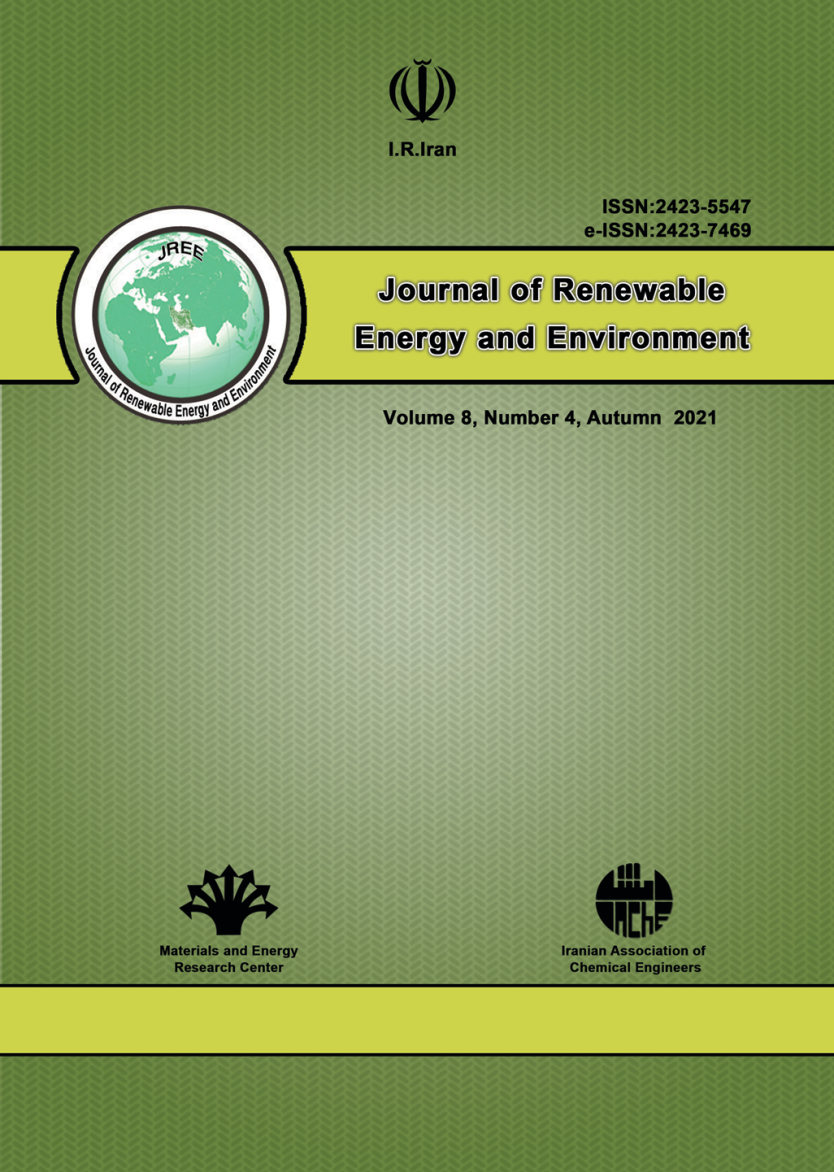1. Galehdar, M., Younesi, H., Hadavifar, M. and Zinatizadeh, A.A., "Optimization of a photo‐assisted fenton oxidation process: A statistical model for MDF effluent treatment",
CLEAN-Soil, Air, Water, Vol. 37, No. 8, (2009), 629-637. (
https://doi.org/10.1002/clen.200900052).
2. Song, L. -H., Zhu, C. -Y. and Wang, Q. -Q., "Study on medium/high density fiberboard wastewater treatment technology [J]",
China Wood-Based Panels, Vol. 10, (2008), 7. (
caod.oriprobe.com/article/15003660).
3. Li, J. and Pang, S., "Modelling of energy demand in an MDF plant",
Proceedings of CHEMECA 2006: Knowledge and Innovation, Auckland, New Zealand, Auckland, (2006), 941-946. (
http://hdl.handle.net/10092/408).
4. Ghorbannezhad, P., Bay, A., Yolmeh, M., Yadollahi, R. and Moghadam, J.Y., "Optimization of coagulation–flocculation process for medium density fiberboard (MDF) wastewater through response surface methodology",
Desalination and Water Treatment, Vol. 57, No. 56, (2016), 26916-26931. (
https://doi.org/10.1080/19443994.2016.1170636).
5. İrdemez, Ş., Demircioğlu, N., Yıldız, Y.Ş. and Bingül, Z., "The effects of current density and phosphate concentration on phosphate removal from wastewater by electrocoagulation using aluminum and iron plate electrodes",
Separation and Purification Technology, Vol. 52, No. 2, (2006), 218-223. (
https://doi.org/10.1016/j.seppur.2006.04.008).
6. Merzouk, B., Gourich, B., Sekki, A., Madani, K., Vial, C. and Barkaoui, M., "Studies on the decolorization of textile dye wastewater by continuous electrocoagulation process",
Chemical Engineering Journal, Vol. 149, No. 1, (2009), 207-214. (
https://doi.org/10.1016/j.cej.2008.10.018).
7. Yetilmezsoy, K., Ilhan, F., Sapci-Zengin, Z., Sakar, S. and Gonullu, M.T., "Decolorization and COD reduction of UASB pretreated poultry manure wastewater by electrocoagulation process: A post-treatment study",
Journal of Hazardous Materials, Vol. 162, No. 1, (2009), 120-132. (
https://doi.org/10.1016/j.jhazmat.2008.05.015).
8. Abdulla, H.M., El-Shatoury, S.A., El-Shahawy, A.A., Ghorab, S.A., Nasr, M. and Trujillo, M.E., "An integrated bioaugmentation/electrocoagulation concept for olive mill wastewater management and the reuse in irrigation of biofuel plants: A pilot study",
Environmental Science and Pollution Research, Vol. 26, No. 16, (2019), 15803-15815. (
https://doi.org/10.1007/s11356-019-04893-w).
9. Irfan, M., Butt, T., Imtiaz, N., Abbas, N., Khan, R.A. and Shafique, A., "The removal of COD, TSS and colour of black liquor by coagulation–flocculation process at optimized pH, settling and dosing rate",
Arabian Journal of Chemistry, Vol. 10, (2013), 2307-2318. (
https://doi.org/10.1016/j.arabjc.2013.08.007).
10. Bernalte, E., Salmanighabeshi, S., Rueda-Holgado, F., Palomo-Marín, M., Marín-Sánchez, C., Cereceda-Balic, F. and Pinilla-Gil, E., "Mercury pollution assessment in soils affected by industrial emissions using miniaturized ultrasonic probe extraction and ICP-MS",
International Journal of Environmental Science and Technology, Vol. 12, No. 3, (2015), 817-826. (
https://doi.org/10.1007/s13762-013-0461-3).
11. Kanmani, P., Kumaresan, K. and Aravind, J., "Utilization of coconut oil mill waste as a substrate for optimized lipase production, oil biodegradation and enzyme purification studies in Staphylococcus pasteuri",
Electronic Journal of Biotechnology, Vol. 18, No. 1, (2015), 20-28. (
https://doi.org/10.1016/j.ejbt.2014.11.003).
12. Körbahti, B.K. and Tanyolaç, A., "Electrochemical treatment of simulated textile wastewater with industrial components and Levafix Blue CA reactive dye: Optimization through response surface methodology",
Journal of Hazardous Materials, Vol. 151, No. 2, (2008), 422-431. (
https://doi.org/10.1016/j.jhazmat.2007.06.010).
13. Kushwaha, J.P., Srivastava, V.C. and Mall, I.D., "Organics removal from dairy wastewater by electrochemical treatment and residue disposal",
Separation and Purification Technology, Vol. 76, No. 2, (2010), 198-205. (
https://doi.org/10.1016/j.seppur.2010.10.008).
14. Suárez-Escobar, A., Pataquiva-Mateus, A. and López-Vasquez, A., "Electrocoagulation-photocatalytic process for the treatment of lithographic wastewater. Optimization using response surface methodology (RSM) and kinetic study",
Catalysis Today, Vol. 266, (2016), 120-125. (
https://doi.org/10.1016/j.cattod.2015.09.016).
15. Dehghani Firouzabadi, M. and Ghorbannezhad, P., "Investigation on MDF market demand in Iran",
International Journal of Lignocellulosic Products, Vol. 1, No. 1, (2014), 72-81. (
https://doi.org/10.22069/IJLP.2014.1925).
16. Azizi, M., Ghorbannezhad, P. and Hatefnia, H., "Estimation of demand for wood panels in Iran by the year of 2012",
Journal of Forestry Research, Vol. 20, No. 2, (2009), 179-182. (
https://doi.org/10.1007/s11676-009-0033-z).
17. Rice, E.W., Baird, R.B., Eaton, A.D. and Clesceri, L.S., Standard methods for the examination of water and wastewater, 22
nd Edition, American Public Health Association, American Water Works, Water Environment Federation, Washington DC., (2012). (
https://books.google.com/books/about/Standard_Methods_for_the_Examination_of.html?id=dd2juAAACAAJ).
18. Subramonian, W., Wu, T.Y. and Chai, S.-P., "An application of response surface methodology for optimizing coagulation process of raw industrial effluent using Cassia obtusifolia seed gum together with alum",
Industrial Crops and Products, Vol. 70, (2015), 107-115. (
https://doi.org/10.1016/j.indcrop.2015.02.026).
19. Esmaeili, M., Yolmeh, M., Shakerardakani, A. and Golivari, H., "A central composite design for the optimizing lipase and protease production from Bacillus subtilis PTCC 1720",
Biocatalysis and Agricultural Biotechnology, Vol. 4, No. 3, (2015), 349-354. (
https://doi.org/10.1016/j.bcab.2015.05.002).
20. Xiao, A., Huang, Y., Ni, H., Cai, H. and Yang, Q., "Statistical optimization for tannase production by
Aspergillus tubingensis in solid-state fermentation using tea stalks",
Electronic Journal of Biotechnology, Vol. 18, No. 3, (2015), 143-147. (
https://doi.org/10.1016/j.ejbt.2015.02.001).
21. Hay, J.X.W., Wu, T.Y., Teh, C.Y. and Jahim, J.M., "Optimized growth of Rhodobacter sphaeroides OU 001 using response surface methodology (RSM)",
Journal of Scientific & Industerial Research, Vol. 71, (2012),149-154. (
http://hdl.handle.net/123456789/13493).
22. Roopashree, G. and Lokesh, K., "Comparative study of electrode material (iron, aluminium and stainless steel) for treatment of textile industry wastewater",
International Journal of Environmental Sciences, Vol. 4, No. 4, (2014), 519. (
https://doi.org/10.6088/ijes.2014040400008).
23. Paulista, L.O., Presumido, P.H., Theodoro, J.D.P. and Pinheiro, A.L.N., "Efficiency analysis of the electrocoagulation and electroflotation treatment of poultry slaughterhouse wastewater using aluminum and graphite anodes",
Environmental Science and Pollution Research, Vol. 25, No. 20, (2018), 19790-19800. (
https://doi.org/10.1007/s11356-018-2184-y).
24. Camcioglu, S., Ozyurt, B. and Hapoglu, H., "Effect of process control on optimization of pulp and paper mill wastewater treatment by electrocoagulation",
Process Safety and Environmental Protection, Vol. 111, (2017), 300-319. (
https://doi.org/10.1016/j.psep.2017.07.014).
25. Hansson, H., Marques, M., Laohaprapanon, S. and Hogland, W., "Electrocoagulation coupled to activated carbon sorption/filtration for treatment of cleaning wastewaters from wood-based industry",
Desalination and Water Treatment, Vol. 52, No. 28-30, (2014), 5243-5251. (
https://doi.org/10.1080/19443994.2013.808582).
26. Islam, S.D.-U., "Electrocoagulation (EC) technology for wastewater treatment and pollutants removal",
Sustainable Water Resources Management, Vol. 5, No. 1, (2019), 359-380. (
https://doi.org/10.1007/s40899-017-0152-1).

